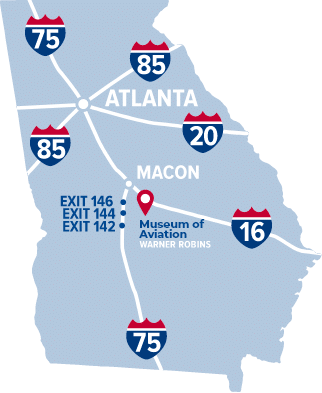The H-21 made its first flight in April 1952. The aircraft was originally designed by Piasecki to transport men and cargo, but was later adapted for the rescue of personnel and for assault operations under combat conditions. Normally having a crew of two (pilot and copilot), the H-21 could carry either 20 fully equipped troops or 12 litter patients.
In addition to serving with the USAF, the H-21 was supplied to the U.S. Army, the French Navy, the Royal Canadian Air Force and the West German Air Force.
Warner Robins Air Logistics Center provided logistics support for all USAF H-21s during their operational service career. The H-21 on display was delivered to the 1401st Air Base Wing, Andrews AFB, Maryland in August 1955 and later assigned to the Presidential Fleet at Andrews AFB. It has particular significance as the aircraft which carried Bobby Kennedy from the Pentagon to Andrews AFB to meet the flight returning President John F. Kennedy’s remains to Washington following his assassination in Dallas, Texas on 22 November 1963. The aircraft was retired from operational service in April 1971 and transferred to the Museum of Aviation from the National Museum of the Air Force at Wright-Patterson AFB, Ohio in 1983.












